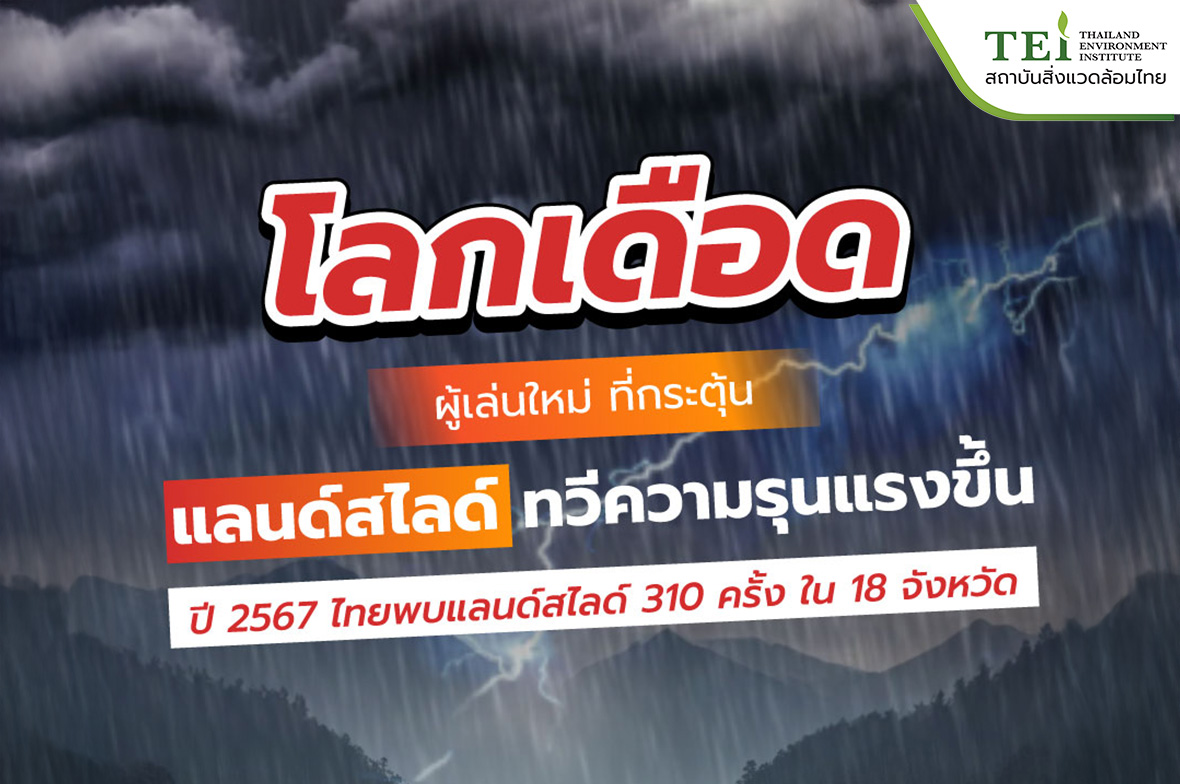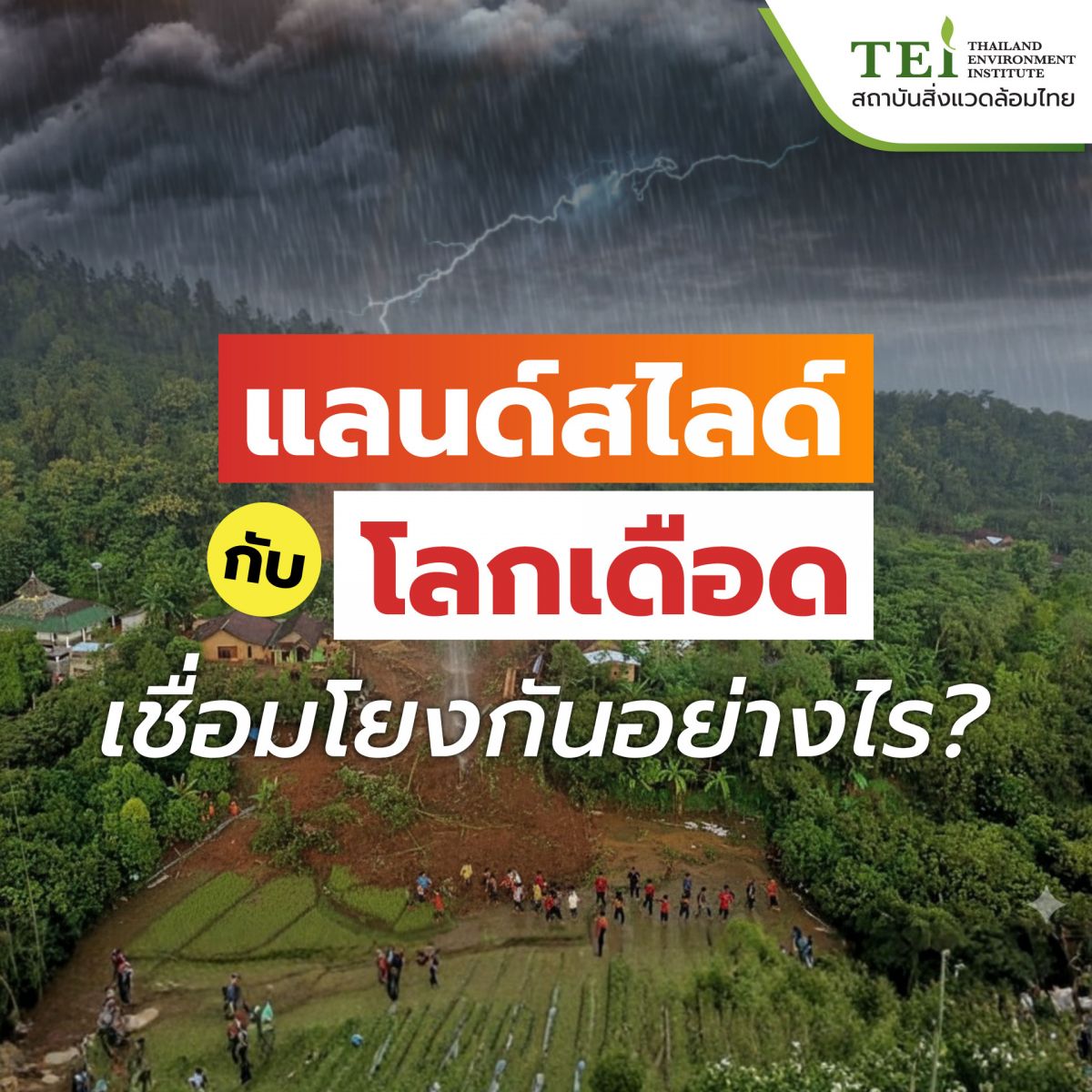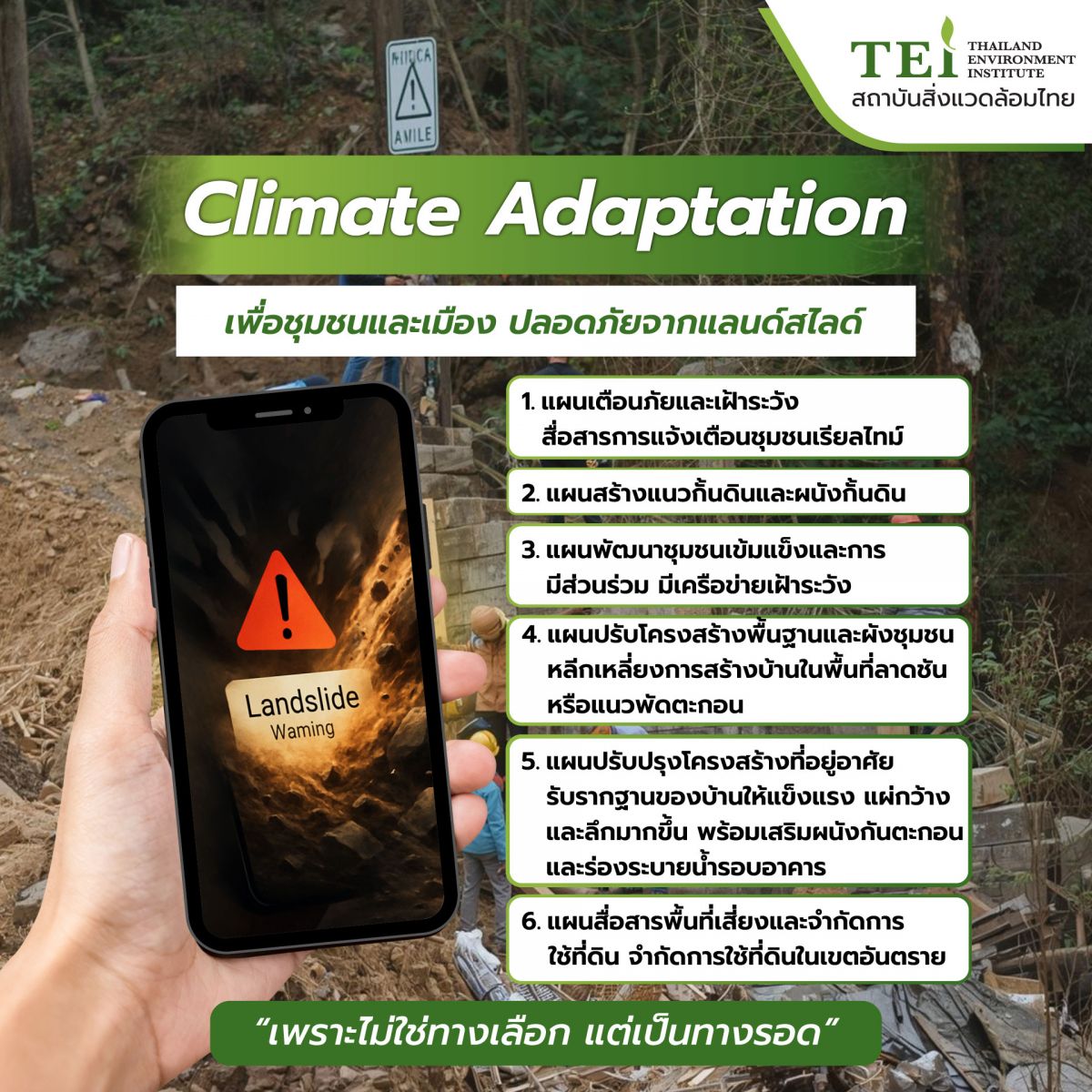
Thematic Areas: Climate Adaptation
'Landslides,' or mudslides, are a severe and silent danger. A geological disaster rooted in 'Global Boiling,' they can turn a beautiful landscape into a disaster area in an instant. When the weather becomes extremely volatile due to 'Global Boiling,' it causes rain to fall heavier and more frequently than ever before. This leads to the soil on mountainsides absorbing more water than it can hold, until it begins to move, becoming a 'landslide' catastrophe that claims both property and lives almost every year.

But what makes the situation more severe and frequent is Climate Change, or 'Global Boiling,' which causes heavier, longer-lasting, and harder-to-predict rainfall. The excess water seeps into the soil, causing it to become saturated more quickly. At the same time, climate change affects the vegetation that once helped bind the topsoil, making the damage from landslides more severe than in the past.
How much damage do 'landslides' cause?
What causes 'landslides'?
'Landslides' can be caused by many factors, including both human activities and natural processes that affect the stability of soil on steep slopes. Changes in land use, human activities, using foothills for housing or agriculture, and improper land preparation and construction can all unintentionally cause soil to lose its strength and create risks.
Meanwhile, natural factors like heavy and continuous rain, water erosion at the base of slopes, and vibrations from earthquakes all act as accelerators, causing water-saturated soil to move suddenly.
The 'landslide' problem, which used to occur only periodically, is becoming the 'new normal' in the era of global boiling. The latest figures clearly show that landslides are more frequent, more severe, and creeping closer to people's lives than ever before. Our only path to survival is "Climate Adaptation," because while we can adjust our own behavior, climate change itself is something difficult for us to fix.
It's time to 'Adapt to Live, Know to Survive' TEI points out that adapting to cope with landslides caused by global boiling can be done by 'Adapting to Live, Knowing to Survive' according to the following adaptation plans:
Warning and Monitoring Plan: Install rain gauges and soil movement detectors in at-risk areas, with real-time communication to alert communities, giving people time to evacuate before a disaster.
Barrier Construction Plan: Use technologies such as soil fences, wooden barriers, or retaining walls to prevent soil and rock debris from flowing down onto homes or roads.
Strong Community Development and Participation Plan: Train local volunteers to recognize warning signs such as ground cracks, water seepage, and fissured soil. Create monitoring networks and conduct annual evacuation drills.
Infrastructure and Community Planning Adjustment Plan: Avoid building homes in areas with steep slopes or in sediment fan zones. Adjust waterways and drainage to divert sediment flows away from community areas.
Housing Structure Improvement Plan: Build stronger, wider, and deeper house foundations. Reinforce sediment walls and add drainage channels around buildings.
Risk Area Communication and Land Use Limitation Plan: Create risk maps at the sub-district or village level to limit land use in dangerous zones and to facilitate long-term preparedness planning.

The Thailand Environment Institute, or TEI, invites everyone to learn the 'Adapt to Live, Know to Survive' approach to cope with the 'landslides' that are occurring more frequently and severely in the era of global boiling. The soil that was once stable is now being shaken by both nature and global changes. TEI believes that understanding risk areas, community preparedness, and living in harmony with nature are the keys to reducing losses and building resilience for Thai society to stand safely.
Share: